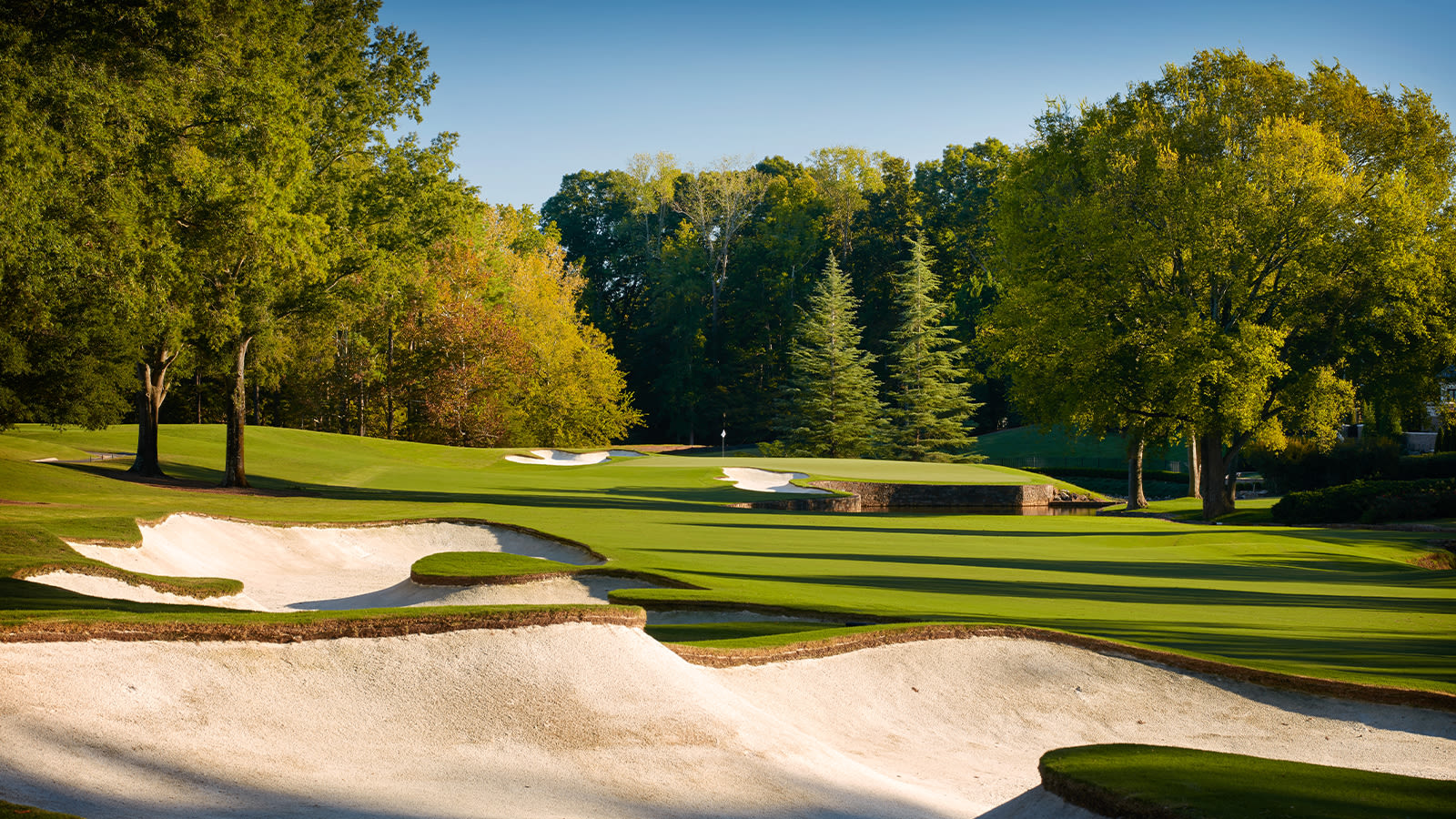quick coaching
How to Play Better Golf in the Fall: Adapt for Changing Conditions
By Keith Stewart, PGA
Published on

A view from Quail Hollow Club on September 30, 2016 in Charlotte, North Carolina. (Photo by Gary Kellner/PGA of America)
Most people would agree that golf in the fall is spectacular. From the cornucopia of colors to the crisp course conditions, golf across the country is at a premium. To ensure you’re getting the most out of your October on-course experience, we’ve created a series of articles to enhance your autumn game. Part 1 covers the change in conditions and how you navigate to play your best. Preparation is key and you’ll see by the end of this fall guide what can be done to get the most out of your next round.

Brittany Lang hits her second shot on the third hole during the first round of the 2020 KPMG Women's PGA Championship at Aronimink Golf Club on October 8, 2020 in Newtown Square, Pennsylvania. (Photo by Darren Carroll/PGA of America)
Say goodbye to the sun. As the days get shorter, so does the growing cycle for the grass. Do you ever wonder why your course gets faster in the fall? The reason has to do with temperature and growing patterns. Colder temperatures at night stunt grass growth. Less sun also plays a role in making the ground harder. We need to account for the turf difference by making some changes while playing.
- Select smart targets off the tee. Realize the ball will roll more and adjust accordingly. It never ceases to amaze me how much slips by the average amateur. You can take serious strokes off your round by paying attention to little things like ground conditions. Imagine an example where you are playing a dogleg. Don’t let the ball roll through the fairway in the fall. Choose a new target and play from the short grass.
- Watch your approach. The same holds true hitting into the green. If it has been a dry fall, the first bounce will be bigger than usual. Take one less club and play for the front edge. If the hole is located up front, try to run it up. If there’s a bunker or rough in the way, play to the middle of the green and putt back to the hole.
- Add a little loft to your short game. On short chips and pitches, use a club with more loft than you would normally. If you hit bump and run shots with an eight iron, change to a pitching wedge. If you like using a pitching wedge, try your sand wedge. By adding height to the shot, you will decrease roll. This is a quick and easy method to adjust without having to alter your stroke!
- Get to the practice green. It has been a career year with the flatstick. That doesn’t need to change as the greens speed up, just leave some time to get acclimated. Before every round, get to the practice green. Save a couple extra minutes to figure out the speed for that day. Speeds can change drastically right now based upon the weather. Roll a couple before you play, and you’ll be better off.

A view of the fifth hole at the Baltusrol Golf Club in Springfield, NJ. (Photo by Gary Kellner)
Learn to change your perspective, just like those leaves change color. Get ahead of these little details and you’ll build on any improvements made in the summer months. Make the moment count by incorporating these keys and you’ll close the fall season on a high note.


